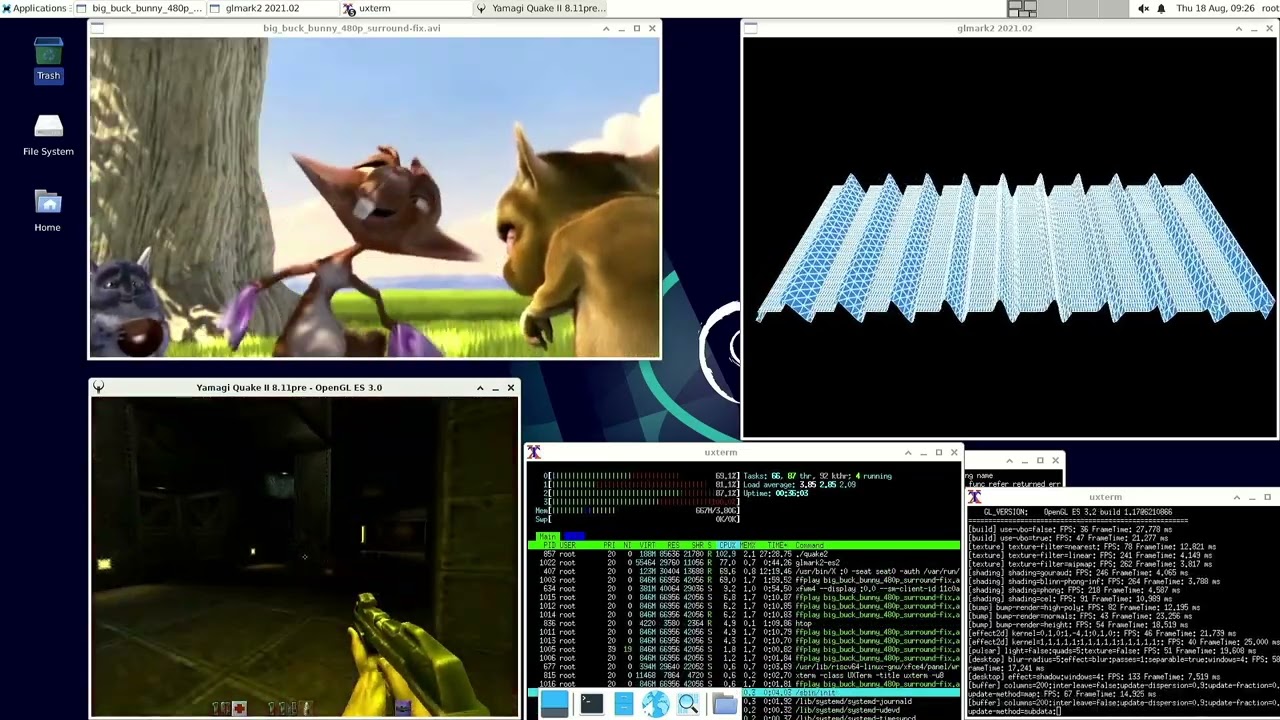The above linked video shows a game, a video, and glmark2 running in a seemingly smooth operation. It is in xfce, and it is one year old.
Why has the current state of software available not reached this level of desktop usability? When I try xfce, it is broken, unusable in the latest release on the local machine. The mouse cursor pointer is missing. Menus do not work, and other setting menus or control panels fail to open completely.
When I try Gnome Wayland, it is usable somewhat, but glmark2 produces very poor results.
When I start xfce4-sesion over and ssh terminal with x forwarding, it works fine!
I read the gpu doesn’t do anything other than 3D acceleration. What is the issue with 2D desktop acceleration? Why does the desktop work less good than in the past?
Is it the HDMI? Configuration? Video out? I am not using 4k monitor. I am just seeking a smooth desktop experience, but I can’t figure out what the actual issue is.
Why have all of the early demo videos of this board used xfce (especially form China), but the engineering release strongly support Gnome and wayland? It makes no sense.
